BBC’s Bogus Claims About “The Drowning Solomon Islands”
By Paul Homewood
Today’s fake news comes from the BBC:
The Solomon Islands are thought to be the first populated place to see islands disappear under the sea.
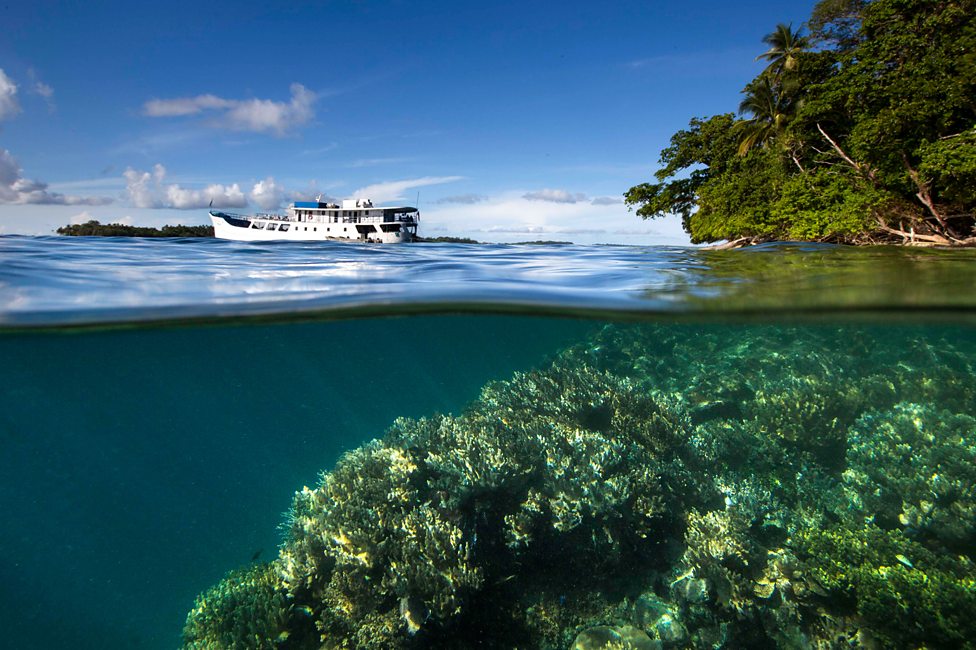
Land has always been at a premium in the Solomon Islands. When one wave of immigrants arrived they found all the prime land occupied by fearsome headhunters. They responded by building artificial islands on top of reefs. These are incredibly vulnerable to sea level rise. Storms or tsunamis can wipe them out at a stroke.
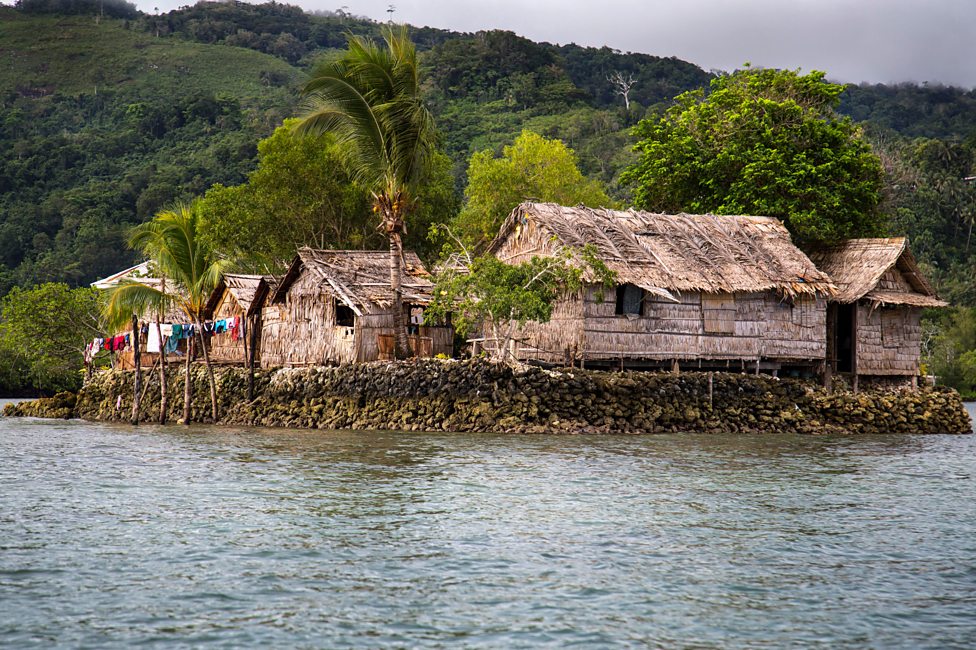
Despite the risk, the “saltwater people” continue to build new islands and celebrate their heritage at events like the Shell Money Festival.
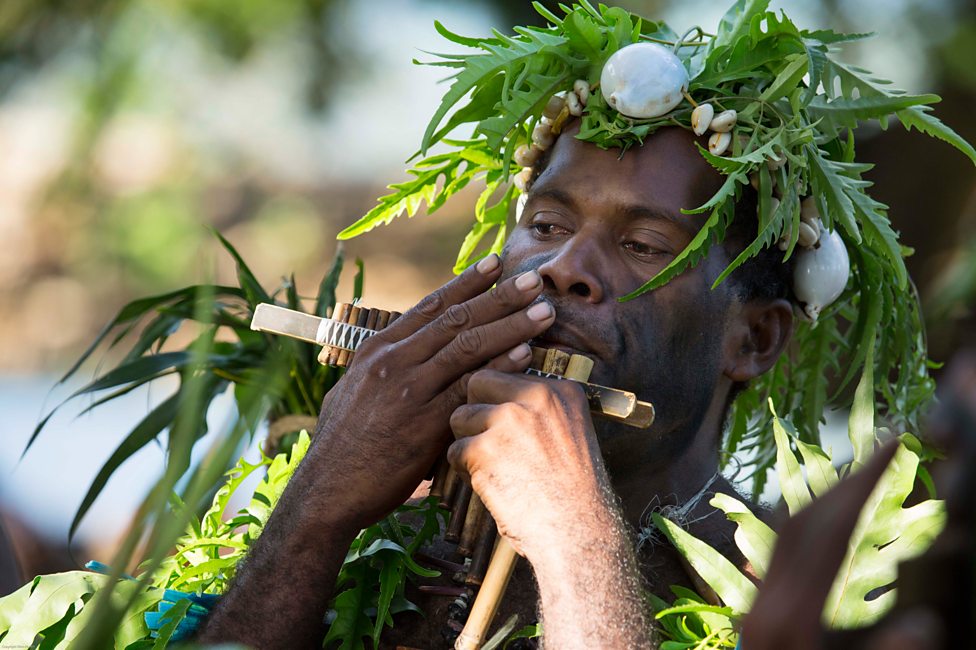
Money has been promised by international donors to help the low lying islands of the Pacific but it’s already too late for some.
When their coastal farmland was spoiled by rising sea water the residents of one of the islands were forced to abandon their land, their homes and their church.
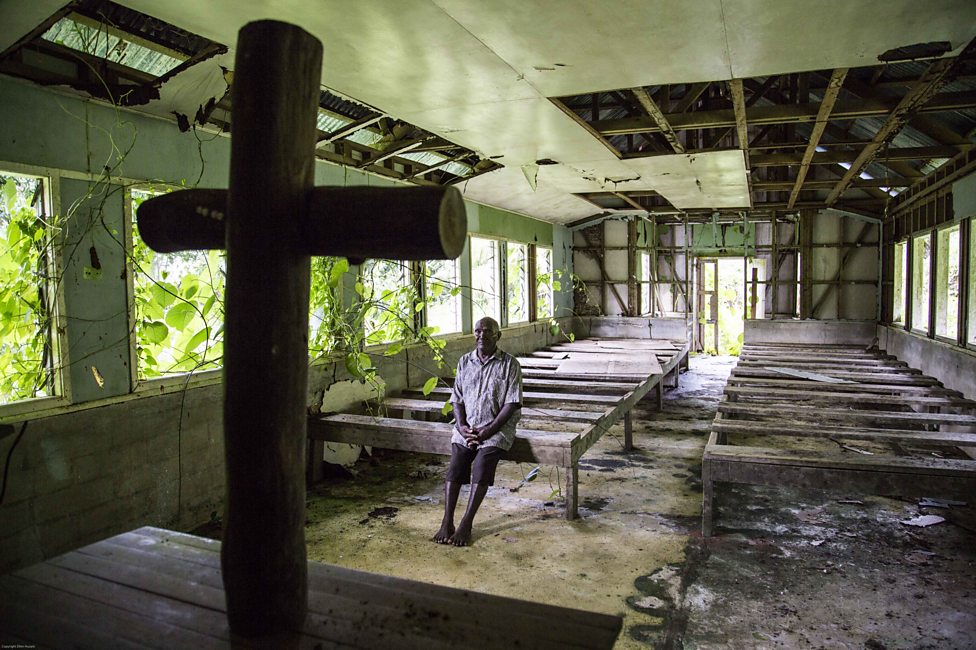
Traditional practices are also threatened by sea level rise.
Megapode birds bury their eggs in the lava-heated sand of the volcanic island of Savo. Locals have to dig a metre into the beach to harvest the eggs.
The beaches where the birds lay their eggs can be inundated and eroded by the rising waters.

Life seems certain to get tougher for the people of the Solomons but as communities and individuals they are showing the way ahead in a time of climate change – adapting their lives when possible and moving their homes when necessary.
I have no idea what is happening to sea levels around the Solomon Islands, as the tidal gauge records in the area are much too short to be meaningful.
The only record NOAA have for the Solomons only dates back to the 1970s, but despite a rising trend, sea levels now appear no higher than at the start of the record.
https://tidesandcurrents.noaa.gov/sltrends/sltrends_global.htm
Nearby Kiribati shows a similar rise since the 1980s, but, significantly, very little rise since the 1960s.
Indeed it is recognised that changing global trade winds have raised sea levels in the South Pacific over the past 30 years, something that is most likely due to ENSO cycles, and is anyway not a change that can be sustained.
The Solomons of course form part of the Pacific Ring of Fire, and therefore sea levels changes may be affected by tectonics.
Nevertheless, the nearest long running tide gauge is at Sydney, and it shows a pretty steady sea level rise since the late 19thC.
Furthermore the rate of rise was highest around the middle of the 20thC.
https://tidesandcurrents.noaa.gov/sltrends/sltrends_global.htm
Put simply, there is no evidence of any man-made effect. We are simply seeing a long running and natural recovery from the Little Ice Age.
I could mention many studies that show that sea level rise has been insignificant in the region, and others that show that many coral islands are actually growing. These have been covered well previously.
But there is one aspect of the BBC story which I really must comment on.
It gives the impression that inhabited land is actually disappearing under the waves. This is however a nonsense, certainly in the context of the case quoted.
The subject of the article is the “saltwater people”, who live on Lau Lagoon, on the island of Malaita.
Mailata is the second largest island of the Solomons in terms of land area and is the most densely populated. The northern region of Malaita includes the Lau Lagoon and is the most densely populated rural area in the country.
It is also a mountainous island, rising to 1430m. Bluntly, it is not about to disappear under the sea just yet.
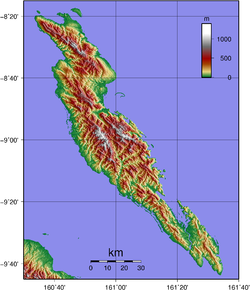
Topographical map of Malaita.
A scientific study was conducted in 2008 by Molea and Vuki, titled “Subsistence fishing and fish consumption patterns of the saltwater people of Lau Lagoon, Malaita, Solomon Islands: A case study of Funaafou and Niuleni Islanders”, which paints a radically different picture to that presented by the BBC.
These are some of the points made in it:
Introduction
The Solomon Islands lie in the south latitudes 5° S and 12° S, and longitudes 152° E and 170° E. The country consists of six major islands and 900 other smaller islands. Malaita is the second largest island in terms of land area and is the most densely populated. The northern region of Malaita includes the Lau Lagoon and is the most densely populated rural area in the country.
Two artificial islands, Funaafou and Niuleni (New Land), are among 50 artificial islands that constitute the Lau Lagoon off Malaita’s northern coast. Unlike Niuleni, which was built primarily by piling reef stones into mounds on the shallow reef flats, Funaafou has a pre-existing natural base made from coral knobs or rocky outcroppings that have been on the reef flat before any people arrived. Early inhabitants constructed the island by walling the submerged rocky knobs with limestone boulders gathered from the reefs at low tide or along the shore of the mainland. At a height of about one metre above the highest high tide mark, the enclosure was filled with earth and the surface level graded with dead coral, rubble and sand.
The movement of the first migrants from mainland Malaita to Lau Lagoon began some 300 to 400 years ago. Among the causes of these out migrations were tribal fighting, headhunting and cannibalism. Migrations to the artificial islands were also directly related to in-fighting among clans and family feuds. It was also believed that people from the mainland wanted to escape from mosquitoes and mosquito borne diseases such as malaria.
The original inhabitants were foragers who gleaned for small fish, shellfish and seaweed on the reef flats. Their population gradually increased over time. Gleaning was done during both low and high tides after which the gatherers retired back to the mainland. Rafts were built as a form of transportation and later used to carry reef stones and boulders to build the artificial islands. Life was dependent on the Malaita mainland during this transition period. Animosity, however, grew between the inhabitants of the artificial and mainland Malaitans and many of the original inhabitants of the small islands were killed, forcing them to break their ties with the mainland and settle permanently on these artificial islands.
The early settlers were animists whose beliefs were ingrained in superstitions and as such much of the islanders’ fisheries activities were associated with numerous ritualistic practices. However, when Christianity was introduced in the 1900s, many young converts abandoned these practices and followed the new religion. Tensions grew between the island’s elders and the converts over the newly introduced teachings of Christianity, which the former believed to be desecrating the ancestral island of Funaafou. As a result, the converts resorted to building the artificial island of Niuleni where they could build a church and escape the pagan practices of Funaafou.
The livelihood of Funaafou and Niuleni Islanders depends heavily on marine resources as many islanders do not own land on the mainland to grow root crops or vegetables. To remedy the situation, the islanders established a “barter” system of trade with the hill people, whereby fish, shell fish and other marine products were exchanged for root crops, vegetables and other garden produce brought by the hill people. This exchange became vitally important for the survival of the islanders of Funaafou and Niuleni. Today, the barter system of trade is still practiced in Lau Lagoon but is becoming less important as staples such as rice, noodles and flour can be obtained from shops.
Fish and other marine resources are important for the islanders of Funaafou and Niuleni, both as a source of daily food as well as items for food exchanged at the local markets. Because of this, fishing skills are crucially important for sustaining life in these environments. Men are expected to be proficient in the different fishing methods and so, fishing has evolved to become the most developed subsistence activity within a household. Akimichi (1978) reported that the Lau people used over 100 fishing techniques, including different types of nets, kite, hook and line, fish poison and spears.
So we learn a number of things:
- These are artificial islands, and not natural ones.
- They are built at just a meter above sea level, and, as the BBC caption points out, are highly vulnerable to cyclones and tsunamis. The idea that they have not had to be rebuilt often in the past is not credible.
- The saltwater people did not settle there voluntarily, but were forced to relocate there due to hostility from the mainlanders.
- The islanders are, and always have been, essentially reliant on marine resources to survive, which they use both for food and barter.
- Apart from the need to occasionally rebuild their villages, the islanders way of life has changed little, despite any recent sea level rise.
- Interestingly the study finds that the early inhabitants built their enclosures about a meter above high tide. Judging by the BBC picture, little has changed.
The simple fact is that the saltwater people have always lived and worked at the edge of the sea, and have no desire to move onto dry land.
As Wikipedia point out, “living on the reef was also healthier as the mosquitoes, which infested the coastal swamps, were not found on the reef islands.”
Ironically, Wikipedia also say that the fish stocks of the Lau Lagoon and sea areas was once plentiful, but it is becoming harder to come by due to pressure from international fisheries.
The idea that they would feel threatened by a few inches of sea level rise is ludicrous. Any such rise could, in any event, be easily contained by adding an extra layer of boulders.
One final part of the jigsaw.
I came across a batch of old photos of Malaita from the University of Queensland (now only on Wayback).
I would assume from the images that they would probably date from pre-war.
Of particular interest is this one of a newly erected artificial island. The surrounding walls appear to be of a pretty similar height to the BBC image, which would suggest the current islands are surviving just fine.
Newly Erected Artificial Island off Nore Fou, Lau Lagoon, Malaita Island, (Solomon Islands)
https://web.archive.org/web/20140522103657/http://www.uq.edu.au/hprc/beattie-malaita
Remember the BBC’s opening headline:
The only thing which is stunning is the length that the BBC will go to twist and fabricate a story, in order to fit its global warming agenda.
The Solomon Islands are not “drowning”, and neither are its people. But that’s not a story the BBC wants you to hear.






“The sea around the Solomon Islands is rising three time faster than the average for rest of the world”…. those Solomon Islands are really something special. It’s good they aren’t sinking or eroding because that would be a real catastrophe.
Australia’s Bureau of Meteorology “Monthly sea levels for SOLOMON ISLANDS”
Source: http://www.bom.gov.au/ntc/IDO70061/IDO70061SLI.shtml
Very interesting graph Jo. Aside from the bleedin’ obvious point that there ain’t a large gradient to show significant overall sea level rise or fall in the study period, it is interesting to note that year-on-year variations are of a different order of magnitude (i.e. much larger) to the supposedly long-term trends evidenced by the graphs in Paul’s article. Any research claiming to see trends and attributing them to factors such as CO2 levels, needs to explain the science behind these variations and why the significant sea-level varying factors are somehow irrelevant to the long-term change.
Fort Denison from BoM website.
http://www.bom.gov.au/ntc/IDO70000/IDO70000_60370_SLI.shtml
I agree with Ian’s point, and guessing that may be (no, I’m pretty sure) the BBC took those BOM data and bounded the record between 2016-17 where there is around a 0.3m rise in the mean and said, “Look, three times faster that the average”. We all know it’s a popular trick when presenting temperature data: starting the record in the 1960’s and 70’s! If the data are tortured sufficiently…
We are embarked on a circumnavigation, and are in Northern Australia, actually very near to Solomon’s. We are in constant contact with friends also on circumnavigation and currently in the Solomons. Two relevant observations from people ‘on the ground’. Coral reefs in the Solomons are very healthy, and there is no evidence of sea level rise. The locals don’t understand what you are talking about when they are asked. The BBC should check their facts before spouting this nonsense.
We were recently snorkelling on the Barrier Reef just north I& the Whitsunday Islands. We saw little evidence of widespread coral bleaching, a fact that the local dive companie# will readily confirm.
“The locals don’t understand what you are talking about when they are asked.”
These locals are obviously being denied sufficient access to BBC (etc.)programming. They’re not even properly indoctrinated ‘scientists’ and their quaint beliefs have never been published in an pal review journal. So, really, what do they know?
I used to think that it was quite a big problem that our national broadcaster had descended to the point where it constantly broadcasts agenda driven falsehoods. Now I don’t think that is as much of a problem as I previously thought, the reason being that they are slowly and inexorably destroying their credibility. People here are well informed about the climate issue but other people are knowledgeable about other things and know when the BBC is lying to them about things that they know about, on an earlier thread I mentioned type 2 diabetics for example. Once it gets to the point where most people think that if it came from the BBC it was probably not true it ceases to be a problem. Apart from the fact that we are forced to pay for it of course.
Same is true in Canada with the CBC, our little BBC. Non-stop propaganda. But the Fake News business only works to the degree the public is ignorant and they have a monopoly on information and the internet (so far) has dramatically changed that. For many people now, if something does appear on the CBC it is automatically considered BS. Progress!
Likewise with RTE the Irish state broadcaster whose many alarmist pronouncements are greeted with eye rolls by much of the population
Once you realise that the BBC does politics by proxy you see and hear it everywhere. The BBC World Service has just started a series on Oceans, but that is just an excuse to cover all their hot button items, such as feminism (they only interviewed women, not by accident but by a stated policy) and “Climate Change”. Politics progs on the BBC must have balance, but not so for the proxy areas, such as religion, comedians, nature, poetry, etc.
The most blatant is that the BBC only broadcasts for those appalled by Trump and by anyone who voted for him, and they make no effort to hide this.
As BBC and Sky only push out “news” (propaganda, distorted or incomplete reporting) they want us to see/hear, one has to resort to other outlets for more informative discussions such as RT or Aljazeerah. Gasp, suck, deep intake of breath!! But one has to take information from any source with a pinch of salt.
“Apart from the fact that we are forced to pay for it of course”
And that IS a problem!!!
Avoid the BBC and watch everything on catch-up and no fee is payable.
Gerry, agreed, I was about to make that comment. The only exception is iPlayer which does need a BBC licence. Use Amazon, Netfix and others and chuck out your TV, your mental health will improve greatly. Don’t engage with the licence snoopers, they have no right to enter without a warrant and can’t get one if you’re not watching live TV or iPlayer. Treat them like Jehova’s Witnesses (“no thank you, goodbye”).
Great post. Thanks.
I’ll guess the Nat. Geog. Mag. has old photos of the islands. Not that I’m going to try to find them. About 10 years ago our subscription ended and we now ignore the solicitations.
I cancelled my lifetime subscription about 7 years ago. However, I have almost a complete set to 1915 between my late parents and my grandparents. Also the indexes. What do you need?
Reblogged this on Wolsten and commented:
BBC alarmist propaganda debunked again
One of your finest posts, covering all of the issues clearly. Well organized, well written.
Best to you and yours,
w.
What fascinates me about all of this scary and threatening “science” is that nobody has produced a plausible idea of what to do about it. Or, if they have they don’t discuss and analyze it for practicality or social and economic costs. The Paris Accord is a good example. Huge solutions at astronomical costs taking many hundreds of years.
Elementary: you are supposed to pay them to continue living on their unstable but beautiful artificial islands. Don’t expect any thanks.
since they are all socialists you can’t expect them to be economically literate or they could no longer be socialists. As the great Baroness Thatcher said, the problem with socialism is running out of other people’s money to spend.
All this is simply designed to keep the populous worried so that they will accept the extra taxes and restrictions placed on them by the government. Whether it works is a mute point. It does for those receptive to it. Those who have been largely brain-washed will not be likely to read Booker, or this excellent blog. They will join their local green group and only hear reinforcing arguments from their ilk. The majority of people are not interested in either side of the argument, which is a pity because they need to know they are being manipulated and over-taxed for no good reason.
Well, how long will it take the BBC to disingenuously use that last photo to illustrate some doomsday article on rising sea level? Look what those poor people had to do to protect themselves from it! And I think I can see ‘the children’ on it – think of the children!
L. Douglas
Thankfully, our children are no longer cited as victims, it’s our Grandchildren that’ll now suffer. So the problem is receding evidently.
Great Grandchildren next? Great, Great Grandchildren perhaps?
While we are on the subject of the Pacific, here is one from 2010 under the category, “you just can’t make this stuff up.”
During a Congressional hearing while questioning an Admiral about a proposed stationing of 8,000 Marines on the island of Guam,, Democrat Hank Johnson of Georgia opined the following: “My fear is that the whole island will become so overly populated that it will tip over and capsize.”
In 1997, Democrat Shelia Jackson Lee of Texas who represents an area near the Johnson Space Center, while on a trip to the Mars Pathfinder operations center in California, Jackson Lee asked if the Pathfinder had succeeded in taking a picture of the flag planted on Mars by Neil Armstrong in 1969. At that time, she was a member of the House Science Committee.
And folks wonder why we want the swamp drained.
sigh
Not that old chestnut.
I think you might find that that was supposed to be a joke.
These folks don’t joke. Also, it is not their only rodeo. They have reputations for such learned utterances.
Reallt? Watch the video. There is zero indication of a joke.
Is there a connection with stupidity and being a democrat perhaps?
I think you have hit upon something many of us have known for years.
The Permanent Service for Mean Sea Level has data for Honiara on the Solomon Islands from 1975-95 at one station and for 1995 to 2016 at another. Mean sea level was 7.354m in 1975 (old station) , 6.938m in 1995 (new station) 6.889m in 2016 (new station). Variable trends, but year on year downwards every year from 2011 to 2016!
Author Jack London traveled by yacht to Malatia in 1908
“We ran down the lagoon from Langa Langa, between mangrove swamps through passages scaresly wider than the Monota, and passed the reef villages of Kaloka and Auki. Like the founders of Venice, these salt water men were originally refugees form the mainland. Too weak to hold their own in the bush, survivors of village massacres, they fled to the sand banks of the lagoon. These sand banks they built up into islands and they were compelled to seek their provender from the sea.”
https://en.wikipedia.org/wiki/Langa_Langa_Lagoon
As for tectonic activity in the area ?
https://earthquaketrack.com/p/solomon-islands/malaita/recent
71 earthquakes in the past 365 days!! While most of the quakes are around Guadalcanal and Makira Is which lie along the South Solomons trench they have some serious quakes, a M8 was widely felt just a year ago and 6.0 magnitude, 4 km depth Auki, Malaita, Solomon Islands was only 8 months ago.
Im sure they just rebuild their coral block walls a bit higher and life carries on.
Oh come on for Pete’s sake!
Don’t you understand, that if South Sea islanders are scared away from their homelands, it means we can all pick up a nice piece of beach-front property on an idyllic tropical island for peanuts?
You really are screwing this up for me and my retirement Paul.
There is the head hunting to consider however …
Nigel S
Plenty of those here.
🙂
Maybe it’s sea level rise or maybe it’s subduction or erosion or something else but there is no evidence that the answer is to cut fossil fuel emissions
https://ssrn.com/abstract=3023248
The mountainous Solomon Islands are at risk from sea level rise. Good grief.
‘Land has always been at a premium in the Solomon Islands.’
The Solomons have one of the lowest population densities on the planet.
Hahaha. Every year the Maldives see’s half a dozen or so of it’s islands disappear. At the same time, a half a dozen or so new islands break the surface every year. Both have been occurring since time began. SO, WHAT IS IT AGAIN THAT WE’RE SO WORRIED ABOUT???
‘Today’s fake news comes from the BBC’ – no change there, when it’s related to climate.
The only thing sinking under the waves is the credibility of the BBC.
Speaking of predicted runaway rising sea level catastrophe….here’s a plausible, well-constructed, entirely balanced Opinion from ‘climate scientists’ and those masters of discrete understatement, Grist. As you’ll see it’s not hysterical scaremongering hyperbole at all…..
https://grist.org/article/antarctica-doomsday-glaciers-could-flood-coastal-cities/
“The sea around the Solomon Islands is rising three time faster than the average for rest of the world”….
Yet another case of the BBC implying that “average” and “normal” are synonymous.
Some values are above average and some below. For goodness sake, that’s what an average is.
I eagerly await the BBC’s shock headlines proclaiming that absolutely no family in the UK has an average number of children: 2.4.
At Cheshire red:you missed out the sarc. comment.Read the paper.Just more alarmist nonsense.